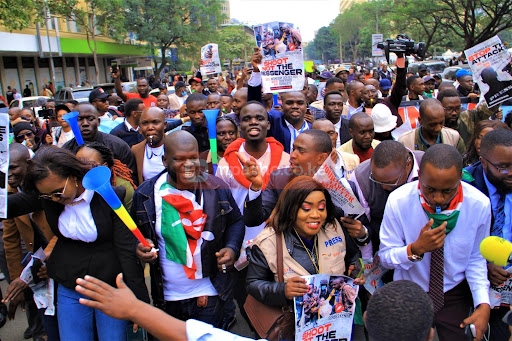Kalenjin community leads in the number of employed teachers, records from the Teachers Service Commission show.
The commission’s submission on the ethnic distribution of teachers in public secondary and primary schools shows there are 73,309 Kalenjin teachers out of the 406,860 tutors employed by TSC.
Coming second is the Kikuyu community with 64,937 teachers, followed by Luhyas with 60,912.
Kambas employed by TSC stand at 48,201 followed by 47,285 Luos, while Kisii are 35,236.
“The age distribution of teachers in the public service ranges from 20 years to above 65 years, majority of them being youth within the age bracket of 30 to 39 years,” the TSC document reads.
It was tabled before the Senate Committee on National Cohesion, Equal Opportunity and Regional Integration.
The team chaired by Marsabit Senator Mohammed Chute has been conducting diversity of employees in various state departments and government agencies.
According to TSC, Meru has 25,930 teachers, Mijikenda (9,958), Masaai (6,692), Pokot (3,911), Taita (3,825), Somali (3,500) and Samburu (1,752).
Thirteen communities had less than 100 employed teachers.
They are Dorobo (71), Daasanach-Shangli (11), Elmolo (17), Foreigner (5), Gosha (20), Gureeh (60), Kenyas Arabs (23), Kenyan Asians (9), Kenyan Europeans (1) and Murulle (14).
Others are Njemps (26), Rendille (87) and Sakuye (32).
In the secretariat, Kikuyus are leading with 567 members, followed by Kalenjin at 483.
Coming at number three is Kamba 360, Luhya 300 and Luo 221.
TSC has a secretariat of 2,943 staff members spread across 38 communities.
As a mitigation measure to ensure ethnic balance, TSC nowadays make its compulsory for teachers to declare their ethnicity, gender and any impairment during the recruitment process.
“By collecting this information, the commission can identify any disparities or underrepresentation of certain groups and take corrective measures to address them," the commission said.
"Additionally, the data gathered allows the commission to track trends over time and monitor progress towards achieving greater inclusivity in the teaching profession.”
“The commission is committed to ensuring inclusivity and diversity in all aspects of the recruitment process. To this end, the commission undertakes audits after every recruitment process to evaluate the level of inclusivity and identify areas for improvement.”
From the report, there are slightly more women teachers than their male counterparts in secondary and primary schools in the country.
Out of the 406,860 teachers, 204,373 are women, while 202,487 are men.
The commission is among the few government institutions that has achieved gender parity in the recruitment of staff.
However, TSC is still lagging behind in complying with the Article 54 of the Constitution that requires that at least five per cent of the staff establishments in government institution are people with disabilities.
From the commission’s records, 5,666 of the 406,860 teachers in its payroll are people with disabilities.
This translates to 1.39 per cent of the total staff establishment.











